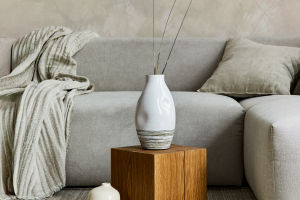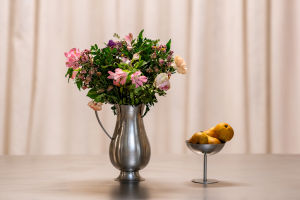Hey Lykkers! Have you ever walked past the roadside and spotted some wildflowers or grass swaying in the wind, then thought, “They're kind of pretty…”?
Good news—you're not the only one! More and more of us are discovering how charming these wild little plants can be when we bring them into our homes. Not only are they free and full of personality, but with the right touch, they can seriously wow your guests.
Wildflowers Add a Natural Touch
In the fast pace of modern life, we often forget that beauty doesn't have to be complicated. A few sprigs of roadside greens or little blooms on your tea table or corner shelf can totally transform the space. These small decorations don't scream for attention, but they bring peace, charm, and a refreshing energy that's hard to find in store-bought flowers.
Tea Table Flowers Have Their Own Style
When we talk about using wildflowers for decorating, we're not aiming for perfect symmetry or fancy bouquets. Tea table flowers—also called "cha-xi flowers"—have a unique philosophy: respect the original shape and character of the plant. They're not about being flashy. They're about being real, calm, and alive—just like a peaceful tea moment.
The Spirit Behind Tea Flowers
Japanese tea master Sen no Rikyū once said that the best flowers for tea settings come from the garden or the wild. He believed that overly fancy or heavily scented flowers didn't match the calm and simple spirit of tea. This same idea lives on today. When we use wildflowers, we're choosing something that's humble, natural, and quietly powerful.
Why Wildflowers Work So Well?
Wildflowers and roadside grass may not look special at first glance, but that's the magic—they're right there beside us, simple and real. When placed in a small vase or tea bowl, just a few branches or petals can create a feeling of connection with nature. It's not about the size or color, but about the life and energy they bring into a space.
Tip 1: Keep Their Natural Look
When we pick wildflowers, the key is to respect their natural shape. Don't over-trim or over-style. Even if we adjust the length or remove a leaf or two, the final look should feel effortless—like it grew that way all on its own. That's the beauty of “looks handmade, but feels like nature.”
Tip 2: Pay Attention to the Lines
The lines or shapes of the stems are super important. Strong, thick branches can feel powerful, while thinner, curving ones feel soft and graceful. Some stems shoot out in exciting directions and add a sense of movement. We just need to pick the ones that match the mood we're going for—bold, gentle, or free.
Tip 3: Don't Overdo the Colors
Keep it simple. When arranging wildflowers for a tea setting, try not to use more than three colors. Fewer colors mean more harmony. We want to create a quiet beauty, not a wild party in a vase. Focus on the shape, texture, and feeling of each plant to keep the whole look balanced and calming.
Tip 4: Use Traditional or Natural Containers
Here's where we can get creative. Instead of store-bought vases, we can use tea cups, teapots, bamboo containers, or even baskets. Add a bit of water, pop in a few wildflowers, and you've got a work of art. The more natural and humble the container, the better it fits with the spirit of tea and nature.
Flowers and Tea Go Way Back
Did you know that long ago, people already loved combining tea with flowers? In ancient writings from the Tang and Song dynasties, people described their tea gatherings with blooming branches and birdsong. To them, drinking tea wasn't just about the taste—it was about the whole experience: seeing, smelling, feeling, and relaxing. That same feeling is what we're trying to recreate today.
More Than Decoration—It's a Lifestyle
For scholars and artists in history, flower arranging while enjoying tea wasn't a fancy hobby—it was part of daily life. By bringing wildflowers into the tea space, they created a little world of beauty and quiet joy. Even today, this simple practice can help us slow down, breathe deeply, and reconnect with ourselves.
So, Should We Try It?
Absolutely! We don't need to spend a lot or buy anything fancy. All we need is an open eye while walking outside, a small vase, and a few quiet minutes. Even a single flower by your teacup can lift your mood.
What Do You Think, Lykkers?
Have you ever brought home wildflowers? How did you display them? Or maybe you've seen a tea table arrangement that made you stop and smile. Share your thoughts with us—we'd love to hear your ideas and see your photos! Let's turn the simple into the beautiful, one wildflower at a time.


